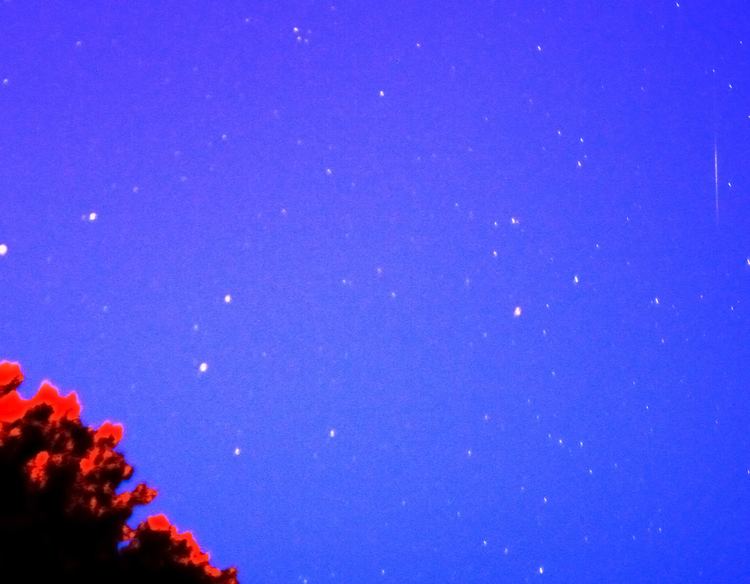Discovery date 1820s Declination +50° | Right ascension 15 28 Occurs during December 28-January 12 | |
 | ||
The Quadrantids (QUA) are a January meteor shower. The zenithal hourly rate (ZHR) of this shower can be as high as that of two other reliably rich meteor showers, the Perseids in August and the Geminids in December, yet Quadrantid meteors are not seen as often as meteors in these other two showers, because the peak intensity is exceedingly sharp, sometimes lasting only hours.
Observations and associations
The meteor rates exceed one-half of their highest value for only about eight hours (compared to two days for the August Perseids), which means that the stream of particles that produces this shower is narrow, and apparently deriving within the last 500 years from some orbiting body. The parent body of the Quadrantids was tentatively identified in 2003 by Peter Jenniskens as the minor planet 2003 EH1, which in turn may be related to the comet C/1490 Y1 that was observed by Chinese, Japanese and Korean astronomers some 500 years ago.
The radiant point of this shower is an area inside the constellation Boötes, not far from the Big Dipper. It lies between the end of the handle of the Big Dipper and the quadrilateral of stars marking the head of the constellation Draco. This meteor shower is best seen in the northern hemisphere, but it can be seen to 51 degrees south latitude.
The name comes from Quadrans Muralis, a former constellation created in 1795 by the French astronomer Jérôme Lalande that is now part of Boötes. In early January 1825, Antonio Brucalassi in Italy reported that “the atmosphere was traversed by a multitude of the luminous bodies known by the name of falling stars.” They appeared to radiate from Quadrans Muralis. In 1839, Adolphe Quetelet of Brussels Observatory in Belgium and Edward C. Herrick in Connecticut independently made the suggestion that the Quadrantids are an annual shower.
In 1922, the International Astronomical Union (IAU) devised a list of 88 modern constellations. The list was agreed upon by the IAU at its inaugural general assembly held in Rome in May 1922. It did not include a constellation Quadrans Muralis. The IAU officially adopted this list in 1930, but this meteor shower still retains the name Quadrantids, for the original and now-obsolete constellation.
